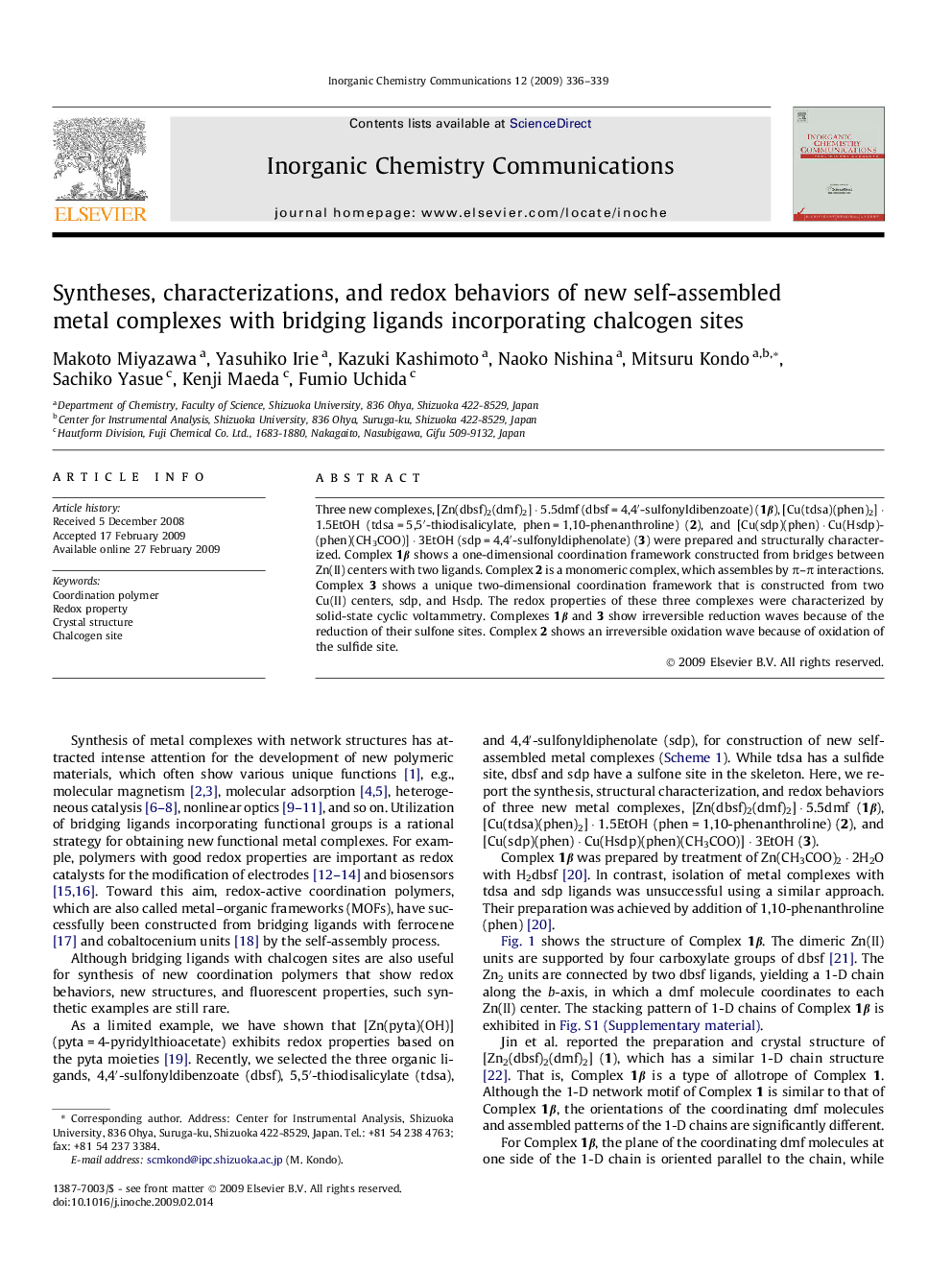| کد مقاله | کد نشریه | سال انتشار | مقاله انگلیسی | نسخه تمام متن |
|---|---|---|---|---|
| 1303188 | 974748 | 2009 | 4 صفحه PDF | دانلود رایگان |

Three new complexes, [Zn(dbsf)2(dmf)2] · 5.5dmf (dbsf = 4,4′-sulfonyldibenzoate) (1β), [Cu(tdsa)(phen)2] · 1.5EtOH (tdsa = 5,5′-thiodisalicylate, phen = 1,10-phenanthroline) (2), and [Cu(sdp)(phen) · Cu(Hsdp)(phen)(CH3COO)] · 3EtOH (sdp = 4,4′-sulfonyldiphenolate) (3) were prepared and structurally characterized. Complex 1β shows a one-dimensional coordination framework constructed from bridges between Zn(II) centers with two ligands. Complex 2 is a monomeric complex, which assembles by π–π interactions. Complex 3 shows a unique two-dimensional coordination framework that is constructed from two Cu(II) centers, sdp, and Hsdp. The redox properties of these three complexes were characterized by solid-state cyclic voltammetry. Complexes 1β and 3 show irreversible reduction waves because of the reduction of their sulfone sites. Complex 2 shows an irreversible oxidation wave because of oxidation of the sulfide site.
Self-assembled metal complexes were synthesized from organic bridging ligands incorporating chalcogen sites. Single-crystal X-ray diffraction analysis demonstrated that these metal complexes have network structures connected by coordination bonds, π–π interactions, and hydrogen bonds. Their crystal structures and redox properties based on the bridging ligands in the solid state are described.Figure optionsDownload as PowerPoint slide
Journal: Inorganic Chemistry Communications - Volume 12, Issue 4, April 2009, Pages 336–339